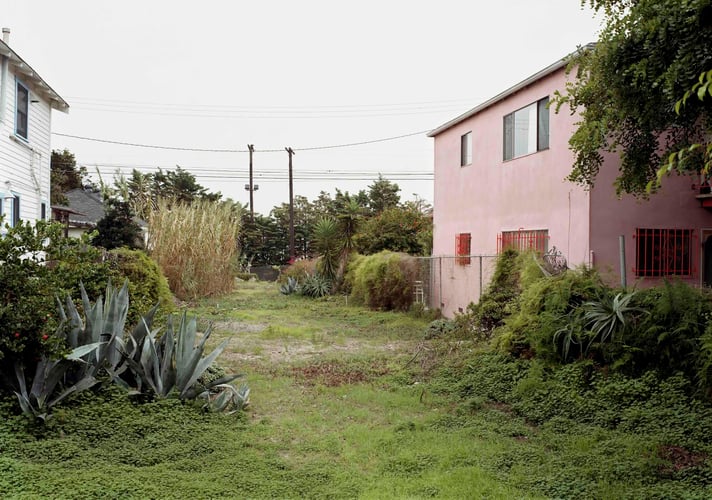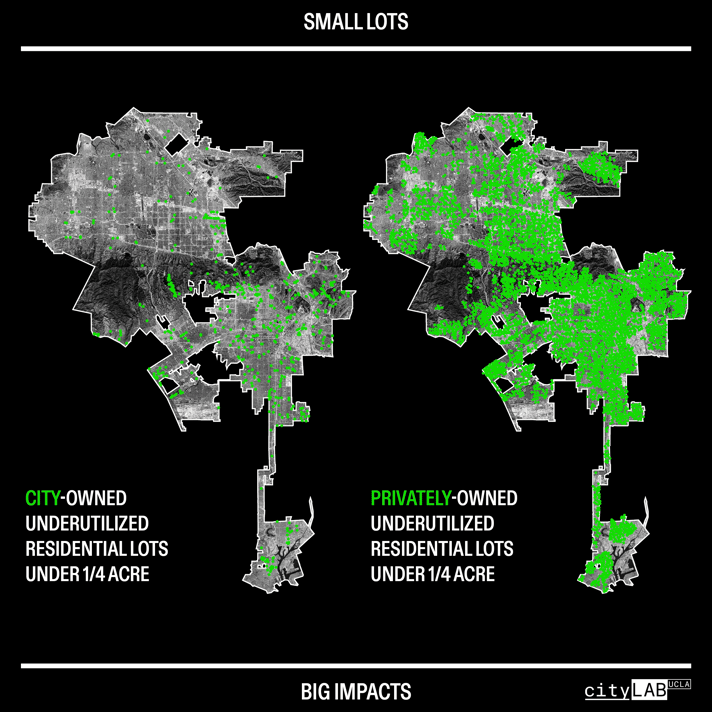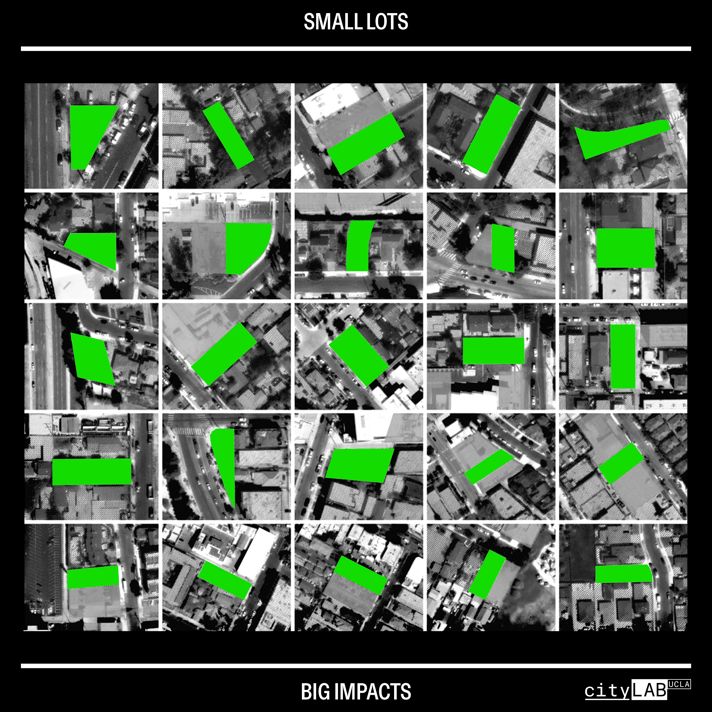|
|
|
|
|
|
|
|
|
Dear DnA readers,
I hope you’re doing as well as possible.
There are plenty of Design Things to Do this month, so jump ahead for those or start here with a design competition, aimed at unlocking real examples of low density housing in the spirit of our beloved bungalow courts, garden apartments or courtyard housing (like Horatio West Court, 1919, by Irving Gill, above).
Small Lots, Big Impact
Small Lots, Big Impact is a two-stage competition that invites design teams to come up with complexes of dwellings for unused, residential sites, and then, the second phase, through a Request for Qualifications (RFQ), the City of Los Angeles will award small, underutilized parcels it owns to "nimble, innovative, and high-quality architect-developer teams to construct housing prototypes."
It was created and launched by cityLAB-UCLA in partnership with the mayor‘s office, city council, the housing department at the city of Los Angeles, and LA4LA, an accelerator aimed at bringing together private and public investment in housing.
cityLAB spent years researching lots in LA and then co-authored the popular Accessory Dwelling Unit law. Following the proof of concept of adding an extra dwelling behind single-family homes, cityLAB founding director Dana Cuff and her team posed the question, "What else would you look to now to say how can we live more compactly on a single-family site, in a way that gives us the quality of life we want? And that's what this competition is supposed to do?"
 An unused residential lot that could be turned into a four-eight unit complex. Image from Small Lots, Big Impact. An unused residential lot that could be turned into a four-eight unit complex. Image from Small Lots, Big Impact.
The notion is for low-rise, multi-unit complexes, a "missing middle" option between bulky apartment buildings and solo homes. Small Lots, Low Impact brings to mind the city’s Low Rise Housing Challenge, organized some five years ago by then Chief Design Officer Christopher Hawthorne, that produced some very creative housing and housing ownership options, in anticipation of the passage of SB9 and 10, which legalized the addition of several units and even subdivision on some single-family lots.
A big difference, says Cuff, is that the Challenge produced some great ideas; this new competition is intended to lead to tangible, viewable buildings on actual lots. cityLAB has unearthed 24,000 vacant residential lots of which about 1,000 are owned by the city. It will sell off about 10 of them. They are also meant to test new ownership models like Tenants-In-Common or other collective options, and open up the chance at development to a new generation of local investors and designers.
 cityLAB discovered thousands of lots ripe for imaginative homes. From Small Lots, Big Impacts. cityLAB discovered thousands of lots ripe for imaginative homes. From Small Lots, Big Impacts.
A Model for Development after the Fires?
Although the competition was developed over the past year, it has extra relevance now. As people recover from the fires in Altadena and Pasadena, there is rising concern among homeowners that lots are going to be sold off to predatory developers who will get the areas upzoned and build apartments, condos, or townhomes.
At the same time, adding at least one other dwelling to the site may be a necessity for homeowners rebuilding a solo house — to defray rebuilding costs with a rental property or to quickly install a small backyard dwelling before embarking on the large home.
Furthermore, both neighborhoods could use some more affordable housing options. One Altadena resident told the Wall Street Journal that she feared apartments going up on neighboring lots, but also acknowledged that workers in their community could not live there, saying, “There’s not one person who works at our sheriff’s station that lives within 20 miles from here. Same with the post office.”
Cuff says the housing models that result from Small Lots, Big Impact could be reproducible, "just like a tract house which is you build one and then you can repeat it."
 Misshapen sites are ripe for imaginative ideas. From Small Lots, Big Impacts. Misshapen sites are ripe for imaginative ideas. From Small Lots, Big Impacts.
The deadline to register for Small Lots, Big Impacts is April 7th, submissions are due on May 4th, and winners will be announced on May 27th. Then the next phase, the RFQ for the site, unfolds from June to August. Click here for all details, and read more about it in the LA Times.
Another Design Competition!
Entries are due on Monday, March 24th for Healing the Heart of LA, which calls on design talents to create a building that honors the historical, architectural, and cultural character of a beloved building lost to the fires. The jury includes architect Sharon Johnston, Adrian Scott Fine (Los Angeles Conservancy), writer Sam Lubell, and Rochelle Mills (Innovative Housing Opportunities).
|
|
|
|
|
|
|
|
|
|
|
|
|
|
|
|
|
|
|
|
|
|
|
|
|
|
|
|